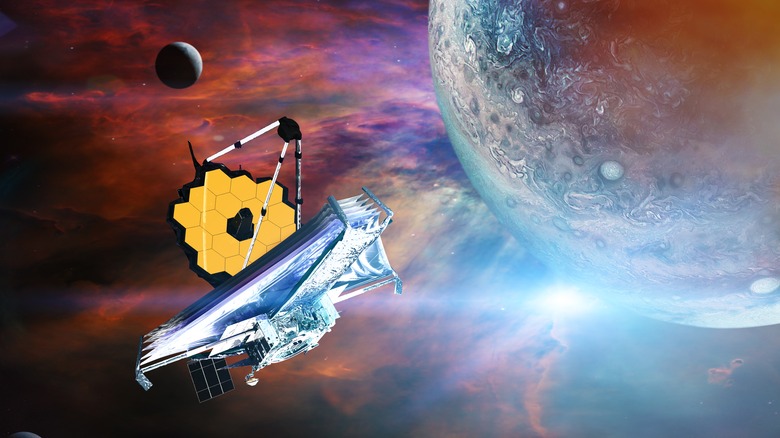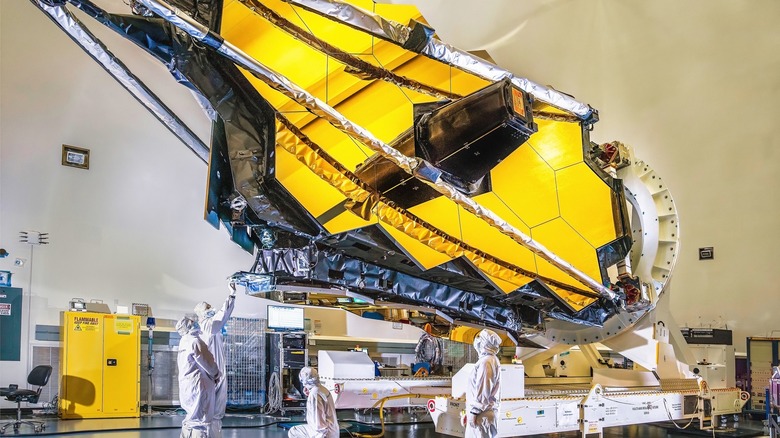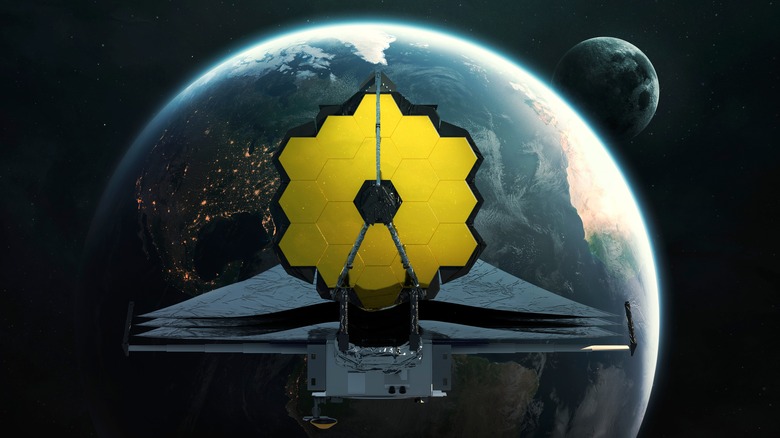Celebrations Over The James Webb Space Telescope Are Short-Lived
The first images from the James Webb Space Telescope were released in July 2022 to a lot of fanfare. The images presented the clearest, farthest look into deep space that humanity had ever seen. NASA's newest tool provided a glimpse billions of years into the history of the universe, but also snapped some of the most detailed images of much closer celestial bodies, namely the planet Jupiter (via CNN).
"These images are going to remind the world that America can do big things, and remind the American people — especially our children — that there's nothing beyond our capacity," said President Biden said as the images were unveiled. "We can see possibilities no one has ever seen before. We can go places no one has ever gone before."
Unfortunately, less than two weeks later, it was announced that the James Webb Space Telescope sustained what officials have called "significant uncorrectable" damage to one of its panels, per Sky News.
The damage to the James Webb Space Telescope
Given that the James Webb Space Telescope is stationed in the inhospitable environment that is outer space, there are understandable concerns over it getting damaged by debris. According to Sky News, this is nothing new since it's a concern with any satellite or spacecraft. After the first crop of images was released to the public, NASA announced that the telescope had been struck by a micrometeoroid.
According to Space, NASA officials announced the strike in June 2022, but occurred sometime between May 22 and May 24, 2022. The impact was on one of the telescope's 18 hexagonal golden mirrors. Each of these mirrors is 6.6 meters from end to end, per NASA, and the 18 mirrors are arranged in a larger hexagon. The specific panel that received the damage is known as segment C3.
NASA tracks the movements of over 27,000 individual pieces of "orbital debris" (also known as "space junk"), though as the administration is quick to note, there are far more pieces of space junk — most of them too small to keep sufficient tabs on — hurtling through space. It's believed that the micrometeoroid that struck the James Webb Space Telescope is one of the smaller, difficult-to-track pieces of space junk.
The dangers posed by space junk
The James Webb Space Telescope is traveling as fast as 17,500 miles per hour, which is fast enough to travel across the Atlantic Ocean, from New York to London, in just 12 minutes. At those speeds, even the tiniest piece of debris can damage the telescope. "There are half a million pieces of debris the size of a marble or larger (up to 0.4 inches, or 1 cm), and approximately 100 million pieces of debris about .04 inches (or 1mm) and larger," NASA said in a statement (via Sky News). "There is even more, smaller micrometer-sized (0.000039 of an inch in diameter) debris."
The dangers posed by space junk aren't something that caught NASA off guard, but the severity of the damage as early as it occurred in the telescope's mission did. According to Space, engineers are still unsure how frequent this kind of impact could be, and at the moment are unsure whether micrometeoroid impacts like the one that pelted the telescope's mirror are rare events that are only likely to happen once over a period of years — or if they are far more common.
However, as of July 2022, NASA is pleased with how the telescope has been operating, despite the damage, though they noted that it will reduce the accuracy of any data that is collected.


